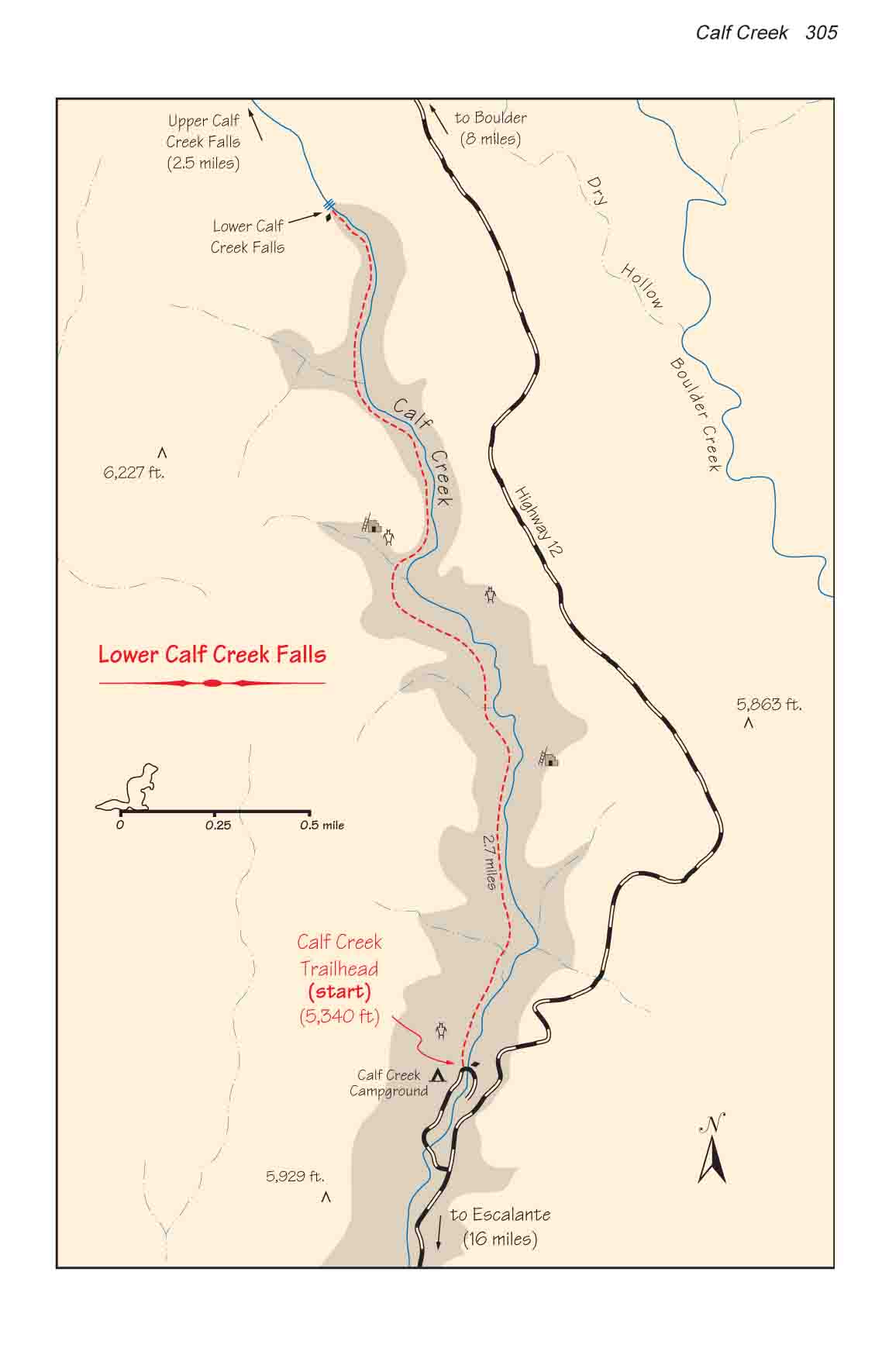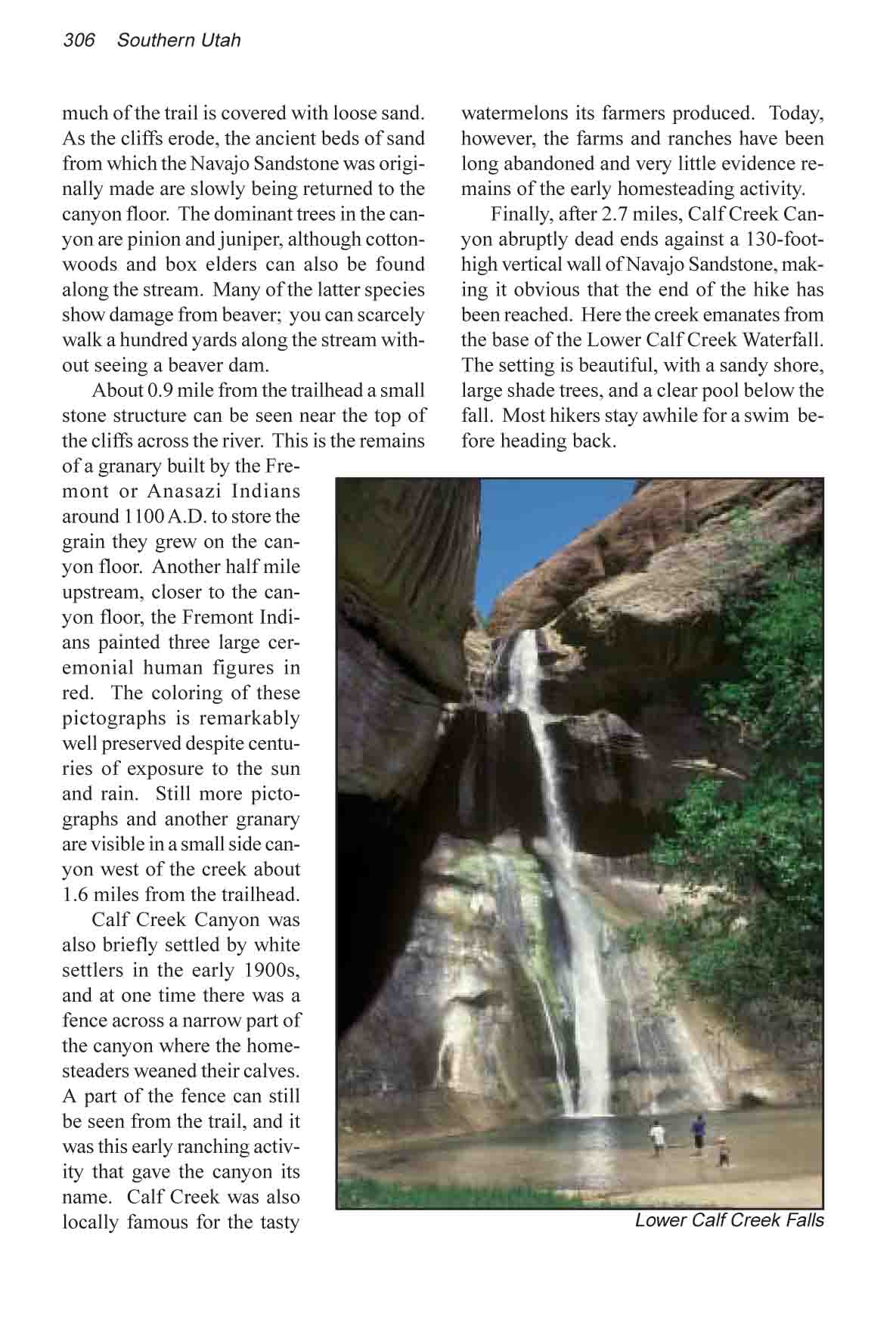|
Links to other sites:
Do you have any recent information to add about this trail?
Ordering books & Maps
Free sample copies of Outdoor Magazines
Comments about this site or our book:

|
Calf Creek Trail is the highlight
of Calf Creek Recreation Area, a delightful desert oasis maintained by the
Bureau of Land Management. The canyon is a haven for birds, beaver, and
other wildlife, and it was also once inhabited by the Fremont and Anasazi
Indians. Take a booklet with you from the trailhead to help you spot some of
the Indian pictographs and two granaries that were constructed by the
Indians some 800-1000 years ago. Also, be sure to take a swimming suit with
you for use in the pool at the bottom of Lower Calf Creek Falls.
The Calf Creek Trail winds along
the west side of Calf Creek, a small desert stream surrounded by vertical
walls of white and pink Navajo Sandstone. Not surprisingly, much of the
trail is covered with loose sand. As the cliffs erode, the ancient beds of
sand from which the Navajo Sandstone was originally made are slowly being
returned to the canyon floor. The dominant trees in the canyon are pinion
and juniper, although cottonwoods and box elders can also be found along the
stream. Many of the latter species show damage from beaver; you can scarcely
walk a hundred yards along the stream without seeing a beaver dam.
About 0.9 mile from the trailhead
a small stone structure can be seen near the top of the cliffs across the
river. This is the remains of a granary built by the Fremont or Anasazi
Indians around 1100 A.D. to store the grain they grew on the canyon floor.
Another half mile upstream, closer to the canyon floor, the Fremont Indians
painted three large ceremonial human figures in red. The coloring of these
pictographs is remarkably well preserved despite centuries of exposure to
the sun and rain. Still more pictographs and another granary are visible in
a small side canyon west of the creek about 1.6 miles from the trailhead.
Calf Creek Canyon was also briefly
settled by white settlers in the early 1900s, and at one time there was a
fence across a narrow part of the canyon where the homesteaders weaned their
calves. A part of the fence can still be seen from the trail, and it was
this early ranching activity that gave the canyon its name. Calf Creek was
also locally famous for the tasty watermelons its farmers produced. Today,
however, the farms and ranches have been long abandoned and very little
evidence remains of the early homesteading activity.
Finally, after 2.7 miles, Calf Creek Canyon
abruptly dead ends against a 130-foot-high vertical wall of Navajo
Sandstone, making it obvious that the end of the hike has been reached. Here
the creek emanates from the base of the Lower Calf Creek Waterfall. The
setting is beautiful, with a sandy shore, large shade trees, and a clear
pool below the fall. Most hikers stay awhile for a swim before heading back.
|

